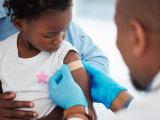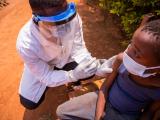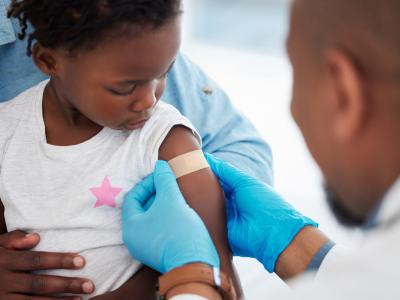Jun 9, 2003 (CIDRAP News) Nineteen human cases of probable monkeypox have appeared in Wisconsin, Illinois, and Indiana, marking the first outbreak of the disease in the Americas, the Centers for Disease Control and Prevention (CDC) announced Saturday, Jun 7.
The patients apparently contracted the disease from infected prairie dogs, which may have caught it from a Gambian giant rat that an Illinois animal distributor sold to a distributor in Milwaukee, the CDC said. The agency said the main route of transmission appears to be from prairie dogs to humans, but person-to-person transmission can't be excluded. The CDC recommended stringent infection control precautions.
The disease produces a fever (incubation period from exposure to onset, about 12 days), rash, and other symptoms resembling those of smallpox, but is less infectious and has a lower fatality rate, the agency said. Case-fatality ratios in Africa have ranged from 1% to 10%, whereas smallpox has a fatality rate of about 30%.
The CDC called the cases "the first outbreak of human infections with a monkeypox-like virus in the Western Hemisphere." Cases reported as of Jun 7 included 17 in Wisconsin and one each in northern Illinois and northwestern Indiana. All the patients had close contact with prairie dogs, most of which were sick; at least six of the patients were reported to be veterinarians or staff at animal hospitals.
The first cases appeared in early May, the CDC said. Scientists at the Marshfield, Wis., Clinic isolated viruses from a human patient and a prairie dog and determined by electron miscroscopy that both were "morphologically consistent with a poxvirus," a CDC statement said.
Subsequently, the CDC conducted serologic testing, polymerase chain reaction analysis, and gene sequencing. Preliminary results Jun 6 and 7 indicated that the virus is monkeypox, a member of the orthopoxvirus group, which includes smallpox. Additional studies with electron microscopy and immunohistochemical techniques also pointed to monkeypox, the CDC said.
The CDC said physicians, veterinarians, and the public should report cases of rash illness associated with exposure to prairie dogs, Gambian rats, or other animals. The Wisconsin Division of Public Health banned the sale, importation, and display of prairie dogs.
Healthcare personnel treating patients with suspected monkeypox should use a full array of standard, contact, and airborne infection control measures, the CDC said. These include gowns and gloves, eye protection, N-95 respirators, and airborne isolation rooms with negative pressure if available.
Veterinarians who treat sick rodents, rabbits, prairie dogs, and Gambian rats are advised to use gloves, surgical masks or N-95 respirators, and gowns, officials said.
Patients in the outbreak first experienced fever, headaches, muscle aches, chills, and drenching sweats, the CDC reported. Between 1 and 10 days later, a rash developed on the head, trunk, and limbs, progressing from pustules and vesicles to crusting.
The CDC did not report the current conditions of the patients, but an Associated Press report said two patients at a hospital in Milwaukee were in satisfactory condition Sunday.
Prairie dogs linked to the cases were sold in May to two Milwaukee area pet shops and a pet "swap meet" in northern Wisconsin, the CDC reported. "The Milwaukee animal distributor had obtained prairie dogs and a Gambian giant rat that was ill at the time from a northern Illinois animal distributor," officials said. The CDC said it is working to trace the source of the prairie dogs and rat and to learn if any other animal distributors or stores are involved in the outbreak.
In 2001 the CDC published a study of an outbreak of human monkeypox involving 88 cases in the Congo in 1996 and 1997. The case-fatality rate in that outbreak was 3.7%, and the attack rate of secondary cases in households was about 8%.
See also:
CDC Jun 7 news release
http://www.cdc.gov/media/pressrel/r030607.htm
CDC's preliminary report on the outbreak
http://www.cdc.gov/ncidod/monkeypox/report060903.htm
CDC's interim infection control and exposure management guidance for monkeypox
http://www.cdc.gov/ncidod/monkeypox/infectioncontrol.htm
Report in Emerging Infectious Diseases on 1996-97 monkeypox outbreak in the Congo
http://www.cdc.gov/ncidod/eid/vol7no3/hutin.htm



















